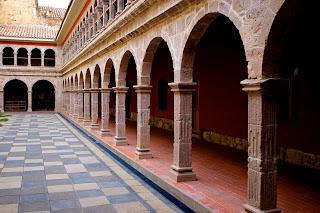 Simply superlative – this is Bolivia. It’s the hemisphere’s highest, most isolated and most rugged nation. It’s among the earth’s coldest, warmest, windiest and steamiest spots. It boasts among the driest, saltiest and swampiest natural landscapes in the world. Although the poorest country in South America (and boy do Bolivians get tired of hearing that), it’s also one of the richest in terms of natural resources. It’s also South America’s most indigenous country, with over 60% of the population claiming indigenous heritage, including Aymará, Quechua, Guaraní and over 30 other ethnic groups. Bolivia has it all…except, that is, for beaches.
Simply superlative – this is Bolivia. It’s the hemisphere’s highest, most isolated and most rugged nation. It’s among the earth’s coldest, warmest, windiest and steamiest spots. It boasts among the driest, saltiest and swampiest natural landscapes in the world. Although the poorest country in South America (and boy do Bolivians get tired of hearing that), it’s also one of the richest in terms of natural resources. It’s also South America’s most indigenous country, with over 60% of the population claiming indigenous heritage, including Aymará, Quechua, Guaraní and over 30 other ethnic groups. Bolivia has it all…except, that is, for beaches. This landlocked country boasts the soaring peaks of the Cordillera Real around Sorata and the hallucinogenic salt flats of Uyuni, the steamy jungles of the Amazon Basin and wildlife-rich grasslands of the Southeast. Unparalleled beauty is also reflected in its vibrant indigenous cultures, colonial cities such as Sucre and Potosí, and whispers of ancient civilizations. This is exactly what attracts visitors, and with good reason. Bolivia is now well and truly on travelers’ radars; opportunities for cultural and adventure activities and off-the-beaten-path exploration have exploded. But while most travelers stick to the well-worn paths of the Altiplano, there’s plenty to be found elsewhere, including the tropical east and the lowland regions in the south. Bolivia’s social and political fronts have been in flux since the appointment of the country’s first indigenous president. Optimism is generally high, especially among the indigenous majority, although many changes are afoot. Protests, marches and demonstrations are a perpetual part of the country’s mind-boggling landscape.
This landlocked country boasts the soaring peaks of the Cordillera Real around Sorata and the hallucinogenic salt flats of Uyuni, the steamy jungles of the Amazon Basin and wildlife-rich grasslands of the Southeast. Unparalleled beauty is also reflected in its vibrant indigenous cultures, colonial cities such as Sucre and Potosí, and whispers of ancient civilizations. This is exactly what attracts visitors, and with good reason. Bolivia is now well and truly on travelers’ radars; opportunities for cultural and adventure activities and off-the-beaten-path exploration have exploded. But while most travelers stick to the well-worn paths of the Altiplano, there’s plenty to be found elsewhere, including the tropical east and the lowland regions in the south. Bolivia’s social and political fronts have been in flux since the appointment of the country’s first indigenous president. Optimism is generally high, especially among the indigenous majority, although many changes are afoot. Protests, marches and demonstrations are a perpetual part of the country’s mind-boggling landscape. This is a truly extraordinary place. Put on your high-altitude goggles, take a deep breath (or three) and live superlatively. Show in Lonely Planet
This is a truly extraordinary place. Put on your high-altitude goggles, take a deep breath (or three) and live superlatively. Show in Lonely PlanetReady to go? Our recommended tours make it easy:
- Trek the Inca Trail, explore the Amazon rainforest and cross the Bolivian altiplano
- Discover the sacred Land of the Incas
- Journey from Cusco to La Paz via Lake Titicaca
- Explore the best of Bolivia in 12 days


